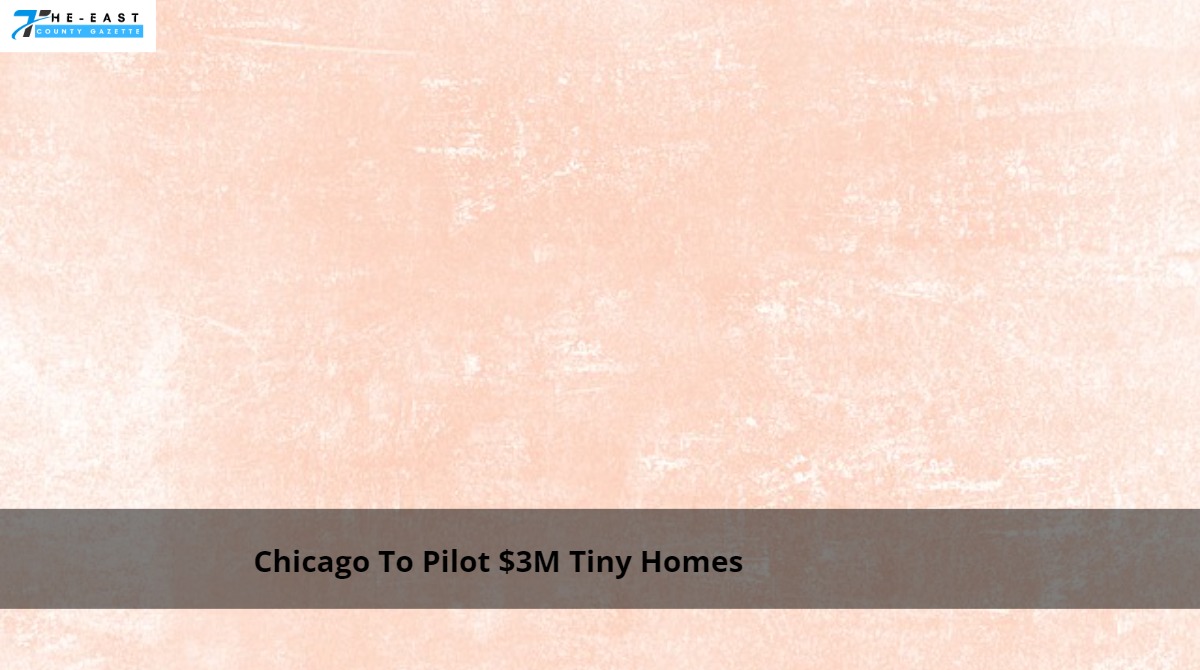Four to eight units will be built on each lot to create “communal space” that encourages the “formation of a community,” according to a top mayoral aide on Friday. The city will build the first tiny homes on city property to avoid land acquisition costs.
In her testimony before the City Council’s budget hearings for 2023, Housing Commissioner Marisa Novara provided more details about the $3 million program Mayor Lori Lightfoot promised would be funded by existing federal housing money.

At least four years in the making, a request for bids for the Chicago program is set to go out in 2023.
The market will establish the specific amount of aid needed. But according to Novara, the city plans on keeping costs down by only accepting proposals for construction on city-owned lots and by subsidizing each of the first few units significantly.
To avoid the expense of site acquisition, we would be open to ideas on city-owned land. Depending on the size of the property, we could see bids ranging from four to eight units. Novara informed the elder people, “We do see this as the development of a community of some sort, so we foresee that, for most groups, there would be a shared area as well.”
As much as $110,000 to $130,000 per unit in aid may be required. And there will be a variety of applications that we can think of. It could be a collective of creatives with little budgets. It might consist of a group planning to establish a cooperative neighborhood with restricted membership. And it may be a group of people who have a hard time adjusting to homes with hallways, elevators, and other familiar places and who would do much better with just their front door.
Chicago Tiny House, president and founder, Brien Cron, has expressed doubt that a six-figure subsidy will be needed.
There’s no need to go all out when it comes to little residences. Needs not wants or specialized interests, motivate the development of tiny houses. We’re currently preparing to construct a 500-square-foot building that will meet all ADA requirements. It has enough space for two bedrooms, a kitchen, a living room, and a bathroom. Everything from water and electricity to gas or electric heat will be provided. The use of solar energy is also feasible. The interior will be climate controlled. I mean, what else do you need in a home? Says Cron.

We expect to spend around $25,000 on each home (including land, building, and operating costs). That means the grand total might be about $40,000. The land would be free, and I’d need a $40,000 subsidy from the city to make this a reality. This is not a business venture for us. We’re just trying to recuperate our investments in these neighborhoods.
To Cron’s ears, Novara’s proposal to establish the Chicago program on city-owned land was like music to his ears.
Cron believed he had agreed with then-Mayor Rahm Emanuel to build tiny homes on vacant public land in Englewood and West Humboldt Park in 2018. Still, the city gave the land to contractors who built conventional single-family dwellings. To him, it was clear that Emanuel’s Tiny Homes RFP was a hoax and that the former mayor was “against the entire initiative from the get-go.”
Now that Lightfoot and Novara are entirely on board, Cron is ready to move forward with his plan to construct four separate tiny house neighborhoods, one on each side of Chicago.
One thing I would rather not see is wealthy developers preying on the city’s underprivileged. Cron stated, “I pray to God that a Chicago firm, not a developer, is awarded the contract.”
In response to retiring Alderman James Cappleman’s (46th) inquiry, Novara stated that it was “quite likely” that some tiny dwellings could be modular homes. She also mentioned that half of the 250 properties being readied for development in the 24th Ward on the West Side would be used for “more standard-sized, single-family” modular homes.
Improvements in that field have been meteoric as of late. The city is home to two manufacturers of modular factories. We’re thrilled by their capacity to work year-round, something we can’t do in Chicago due to the need to build foundations at specific times. This is a good path, and we welcome innovation at all times,” Novara remarked.
20th District South Side Alderwoman Jeanette Taylor posed the question to Novara concerning the viability of constructing micro-apartments out of repurposed railroad shipping containers.
The commissioner stated, “It is exceedingly difficult to re-use existing shipping containers depending on what they may have conveyed.”

